What is Fileteado Porteño and What Are its Features?
Discover what is behind the decorative lettering style created in Buenos Aires, Argentina
At the end of the 19th century, long before the term ‘lettering’ was being used in Buenos Aires, immigrant artists experimented with long-haired brushes and text, searching for an identity for their very young city. They eventually found it among mischievous proverbs, roguish phrases, and jokes.
If tango is the music of Buenos Aires, fileteado porteño is its mark, its hand writing style, and its signature. Curled, ornate, and dramatic, just like the spirit of Buenos Aires, fileteado and its messages are a reminder to the inhabitants to not forget the origins, history, and even life philosophy of their city. Unesco has declared it Intangible Heritage of Humanity.
Read on to find out why!
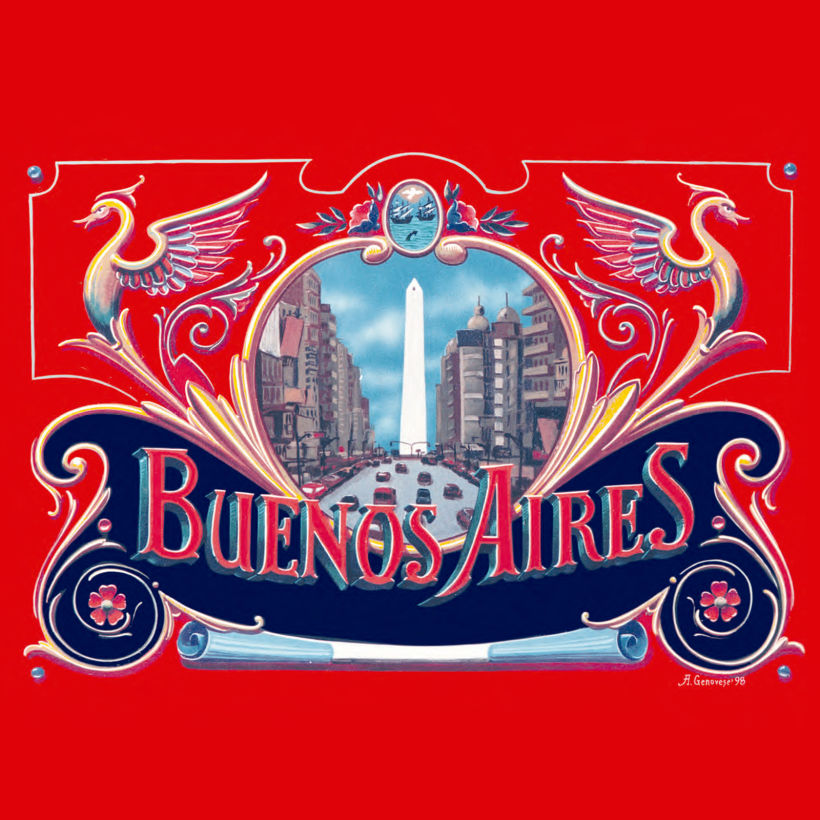
Much more than strokes
Fileteado is a popular decorative style that originated in Buenos Aires at the end of the 19th century. It was traditionally used to paint horse carts and, at a later stage, to decorate trucks. Today, it is more common to see it on buses, or ‘colectivos,‘ as they are called in Argentina. But there’s a lot more to fileteado than just lettering and motifs on transportation.
If you ever visit the city, pay attention to the messages behind the style. Fileteado never comes alone: it is generally used to write witty phrases, poetic proverbs, or humorous, emotional, and philosophical aphorisms, expressed in lunfardo, the colloquial, tango-based language of the city.
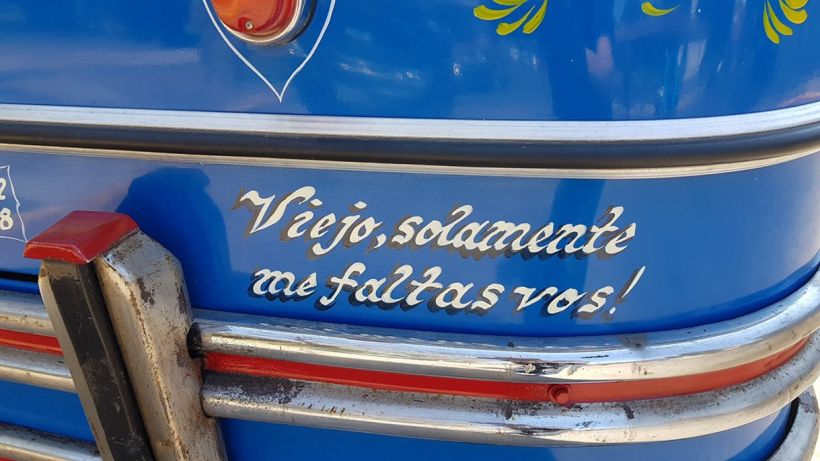
The characteristic ornate letters, usually Gothic or cursive, are hand-drawn by artists who uphold tradition and often take pride in their European, especially Italian, origins. For this reason, form and message often go hand in hand.
Sentimental and dramatic dedications are a common characteristic of fileteado. It is not unusual to see someone taking the trouble of filleting a dedication such as "To my mother" on a Buenos Aires bus. Or a snippet from a famous tango, such as "The world was and will be crap," alluding to a popular song by Discépolo, called Cambalache.
The city's spirit is also expressed in exaggerated nicknames that allude to the owners of the filleted vehicles. "The unequaled," "This is who I am," or "If your daughter despairs, blame it on this young lady."
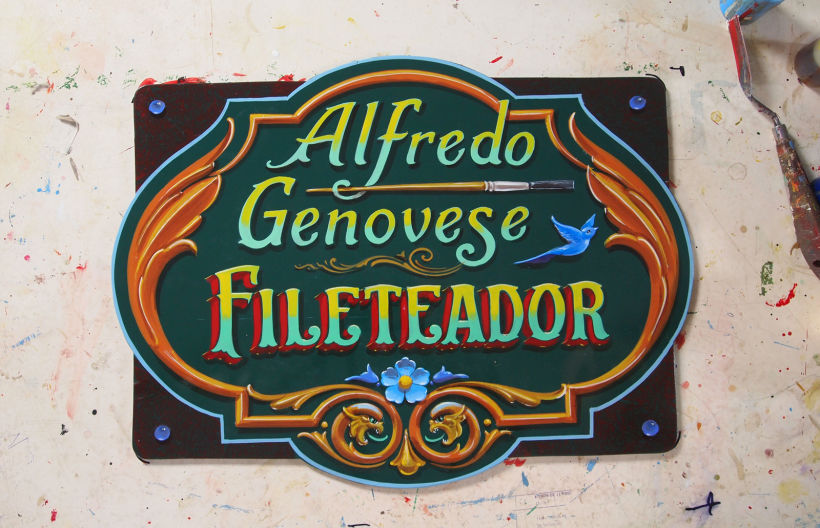
The origins of fileteado
Fileteado, like tango, was born from a mixture of pride, mischief, and necessity. Legend has it that two children of humble Italian origin, working in a workshop, dared to emulate the work French lettering artists did on the stained glass on a carriage car, without any training.
And they did it without anyone asking. They added gold and red firuletes (curlers and ornaments) on a vehicle that had to be painted gray. Not only did the result not get them into trouble, but the owner appreciated it and proudly showed it off around the city. Soon new orders arrived.
The 10- and 13-year-old boys became the first legendary Buenos Aires fileteado style artists. Vicente Brunetti and Cecilio Pascarella started the tradition of painting carriages. Many other people imitated them. The key to the success of fileteado artists was speed: while the French spent hours on details, fileteado was done in a few minutes.
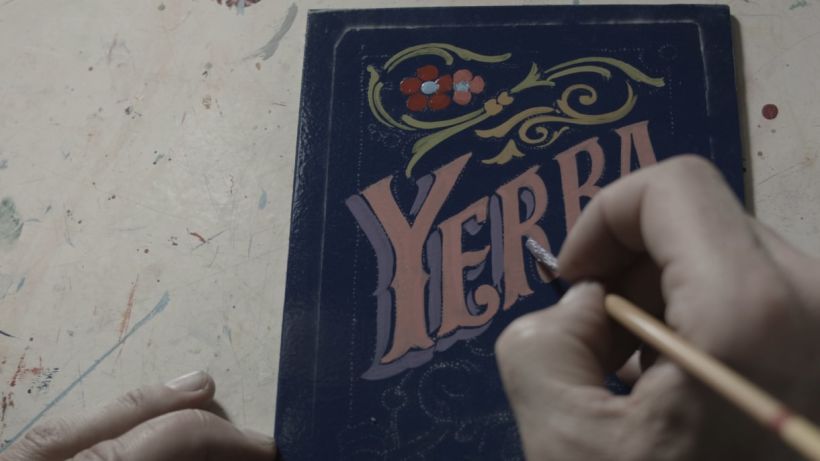
The evolution of fileteado
Since then, several specialists emerged that would be part of the history of this Buenos Aires aesthetic: Ernesto Magiori and Pepe Aguado. Artists like Miguel Venturo also incorporated elements of fantasy into the style. He introduced birds, flowers, diamonds, and dragons figures among the letters on truck doors.
Later, other artists also introduced elements of superstition that became part of the city folklore. For example, bus numbers were drawn and are still drawn today, with a typographic style that emulates the lottery, inviting passengers to play that number.
Over time, this style permeated the city, especially its newsstands and bars, with its symbolism and poetry. Fileteado included elements such as boats (which referred to the return of immigrants to Europe), flowers, birds, clovers, and lions symbolizing beauty, luck, and strength. Shaking hands, suns, flags, saints and virgins were incorporated and are currently mixed with figures such as Maradona or singer Carlos Gardel.

Decline and resurgence of fileteado
In the late 1960s and early 1970s, fileteado was at the apex of its splendor. There were outstanding masters in this art, and a vast number of vehicles and trucks exhibited the art around the city.
In the mid-1970s, however, pre-emptying a dark period in the country's politics, a government ordinance prohibited the use of fileteado on buses, arguing that they confused passengers when reading the numbers. Even though this almost ended the tradition of fileteado, over time, the art re-emerged, but never relived the splendor of its golden age.
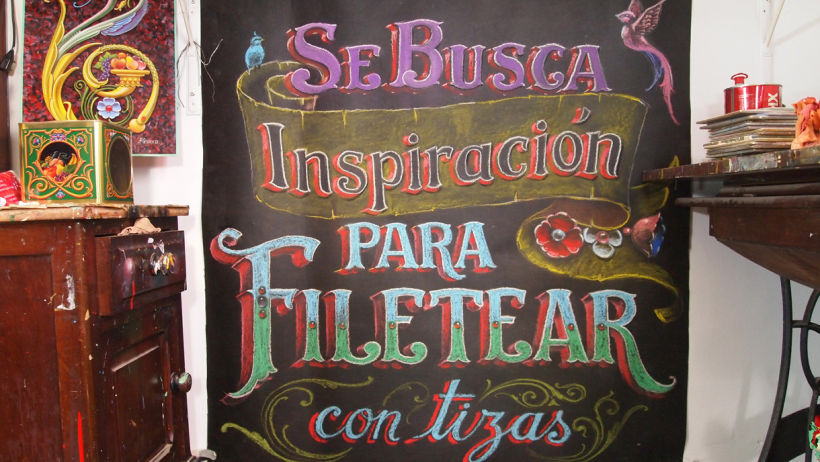
The resurgence of fileteado came mainly through the ingenuity and creativity of those who applied it in other areas. The walls of the city, as well as clothing, bottles, bar signs, and even skin, through tattoos, became new surfaces for fileteado.
In 2014, the City of Buenos Aires submitted the Buenos Aires fileteado style to UNESCO's Representative List of Intangible Cultural Heritage of Humanity. In December 2015, it was declared a World Heritage Site. Based on this declaration, the Government of the City of Buenos Aires had to commit to protecting this artistic expression and encourage its production, investigation, and recording.
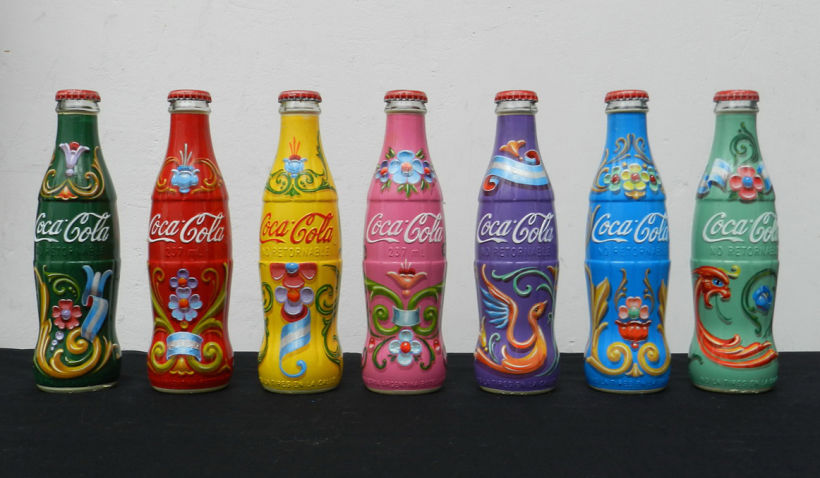
Style features
The origin of the name of fileteado (filleting) is in the Latin word filum, meaning thread. This type of decoration requires long-haired and fine-tipped brushes for painting the typical moldings and ornaments.
In Filete porteño, by Alfredo Genovese (@tallerdefileteado), anthropologist Norberto Cirio describes the eight characteristics of fileteado:
- High degree of stylization: it is very simple, reduced to basic lines.
- Prevalence of bright colors, especially red and gold.
- Presence of shading and chiaroscuro, creating the illusion of depth.
- A taste for Gothic letters or highly ornate characters.
- Obsessive recurrence to symmetry.
- Enclosure of each composition in a frame.
- Overload.
- Symbolic conceptualization of many objects represented (the horseshoe as a symbol of good luck, the dragons as a symbol of strength.)
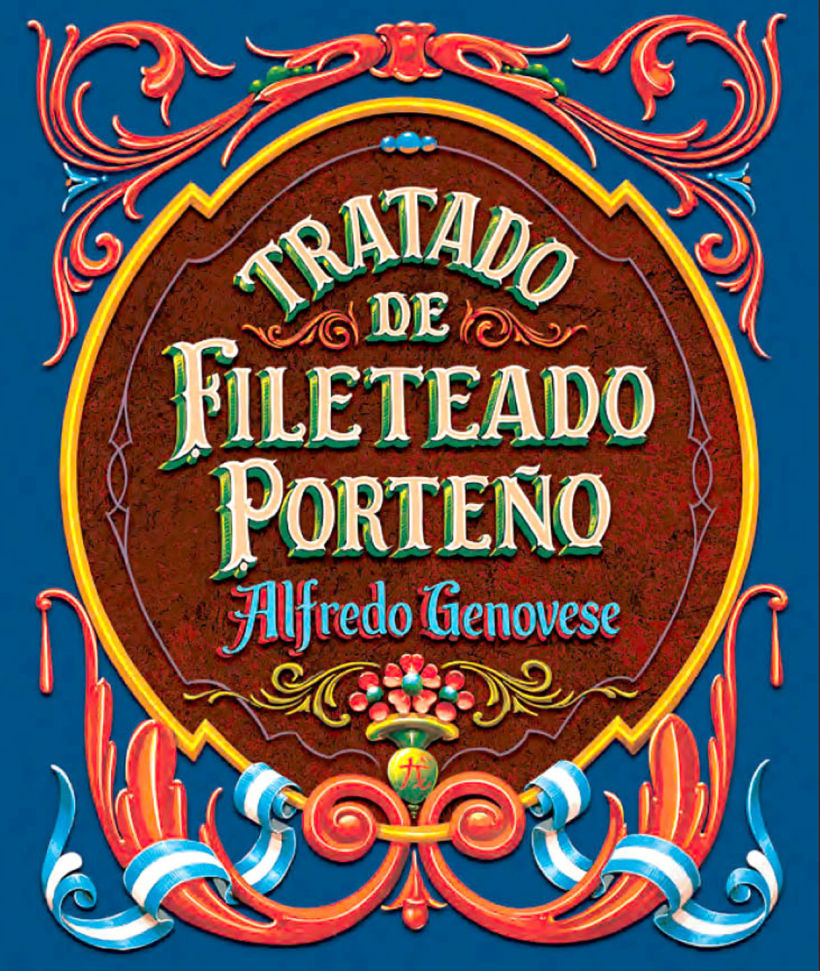
Today the Fileteado porteño is part of the DNA of the city, known as the Paris of South America, and always attentive to trends. Its style blends in perfectly with the international popularity of lettering.
Do you want to explore the fileteado technique? You can do this with the help of one of its best artists: Alfredo Genovese. He reveals the secrets of this art in his course Fileteado Porteño: Illustration and Ornamentation of Posters.
English version by@acesarato
You may also like:
- Lettering Tutorial: Hand Lettering Design Using Layers
- What is Calligraphy and What Materials Do I Need to Get Started?
- 5 Lettering and Typography Books to Inspire Your Projects






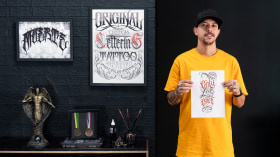
0 comments